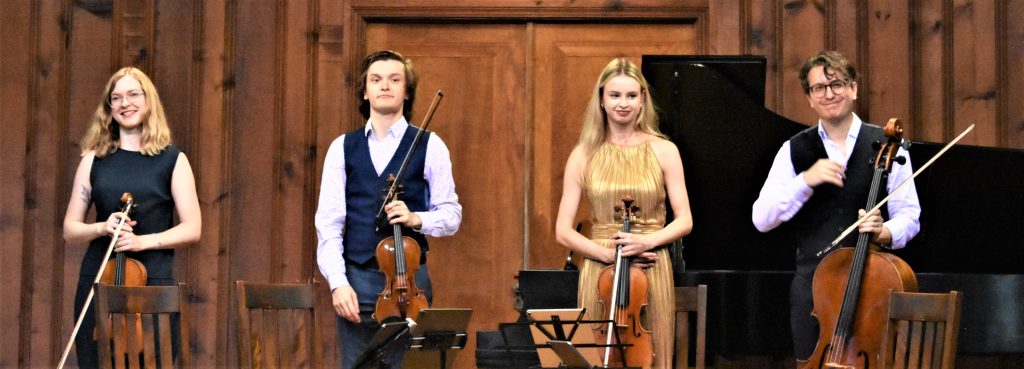
by Kevin T McEneaney
Erinys (meaning Furies) Quartet derives its name from the Oresteia by Aeschylus. They were founded in 2018 at the Sibelius Academy in Helsinki, Finland. They have toured Europe and the United States. They are a protégé of the noted Dover Quartet at Curtis.
The quartet opened with Terra Memoria (2006) by Kaija Saariaho, a postmodern ethereal lament recalling the death of several postmodern composers. Based in Paris, Saariaho was a leading minimalist composer who wrote several operas; her last opera, Innocence (2020), was acclaimed by the New York Times as her masterpiece.
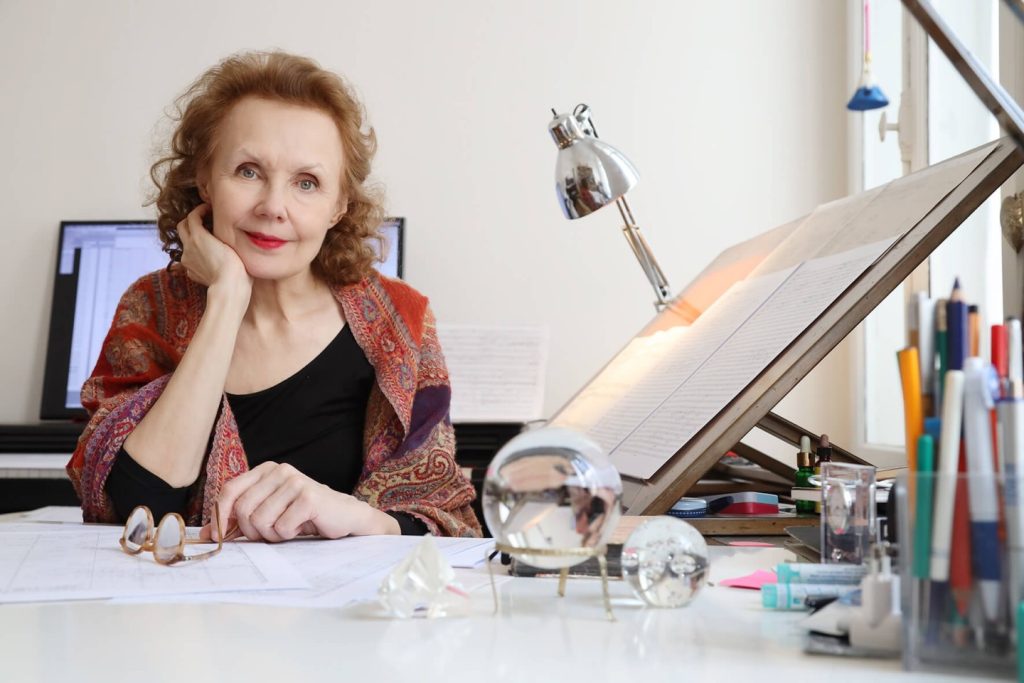
Terra Memoria opened with silence, the slightest hints of sound emerging from the first violin of Elizabeth Stewart, then other instruments gradually joining in with high-pitched notes. This work was tender, sorrowful, pitching lament with great delicacy. They sounded as if they were from a distant planet, speaking in a new musical language that delineated deep emotion. This short composition was perhaps the strangest and most fragile musical composition that I have ever heard, ably presenting its theme: the transience of life on earth.
String Quartet in B Flat Major, K. 589 (1790) by Wolfgang Amadeus Mozart which opened with a delightful and elegant triple meter Allegro by the first violin and supported with shy admiration by Marija Raisanen on viola with firm agreement on the cello of Stergios Theodoridis offered impressive lyricism. Changes of lead between the instruments provide pleasing ornamentation. The second movement Larghetto opens shyly with the viola, yet the cello takes firm charge in the upper register with delicate sensuality. In the concluding Minuetto, the cello fades to the background as the first violin directs the ensemble with a cheerfully skipping 6/8 rondo meter that imparts the impish delight inhabited by quick-witted repartee conversation at a banquet.

String Quartet #3.Sz. 85 (1927) by Bela Bartók, his shortest and densest string quartet, which compresses a host of styles as if they were put in a cocktail blender. It opens with an early morning fog of clustered pitches where the first violin plays disconnected phrases as if the composer was compressing the traditional for movements into a single first movement that is a jig-saw puzzle of folk tunes. The second movement was dominated by the seesaw, pizzicato chords of Theodoridis on cello, which began racing, then countered by the first violin, as if there was a somewhat heated argument between them about style, folk versus classical. The third movement recapitulation presents a more genial discussion with the second violin of Joosep Reimaa and Raisanen’s viola offering solutions to the of blending folk with classical. The Allegro Coda happily celebrates the marriage of folk music to the classical tradition.
This quartet shared the first prize of Philadelphia’s Music Fund Society with the Italian composer Alfredo Casella; this quartet was first performed in Philadelphia in December 1928. I must point out that this quartet demands a devilishly, difficult cooperative unity of instruments by this young, talented foursome of musicians.
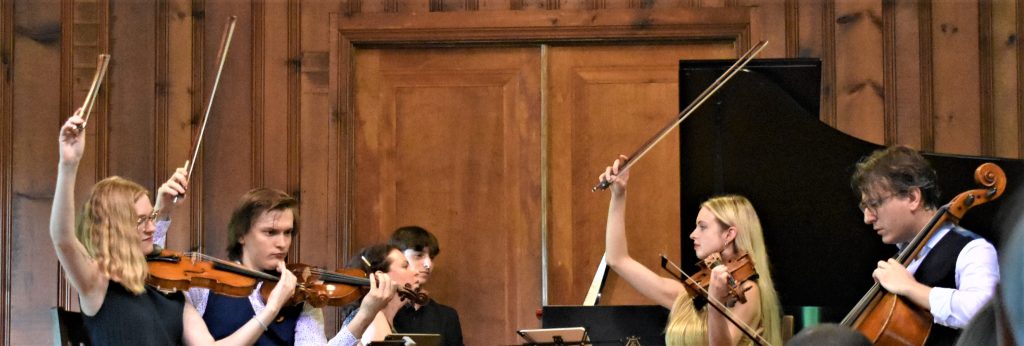
The audience demanded two lengthy bows. After Intermission, guest pianist Victoria Schwartzman joined the quartet for Piano Quintet in A Major, Op. 81 (1887) by Antonín Dvořák. This work was composed in 1882 and premiered that November in Prague, however, Dvořák lost the manuscript, yet was able to recover it from a friend in 1877 and made revisions, but it was not published until 1922, eighteen years after his death; it now enjoys the reputation of being one of the greatest piano quintets.
The warm opening cantabile bars of the cello remain memorably inviting. The piano, played by Victoria Schwartzman with confident assurance and rhythm éclat enters with rhythmic brilliance; the strings respond, debating in roundtable discussion whether they should play the Allegro in A Major or Minor. By turns, the instruments politely argue with varied mood registers, from argumentative, and pacific, to humorous solutions while harmonies change in a seesaw between Major and Minor. The Andante Ukrainian Dumky movement brims with melancholy, which resonated with contemporary significance, especially in the viola’s lament as the piano countered with optimistic hope.
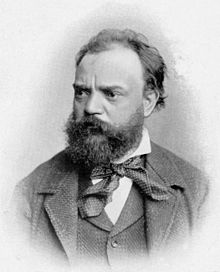
The dervish-like Scherzo of the Furiant depicts an ecstatic Bohemian dance amplified by Schwartzman on piano as if the piano represented a chorus of clapping supporters. The concluding Allegro Finale admits difficulties, yet the piano persuades the other instruments that there is a solution to any, and all, problems.
Amid the cool fog and drizzle at Music Mountain, this was an unusual and memorable concert by young, talented musicians who presented superb performances.
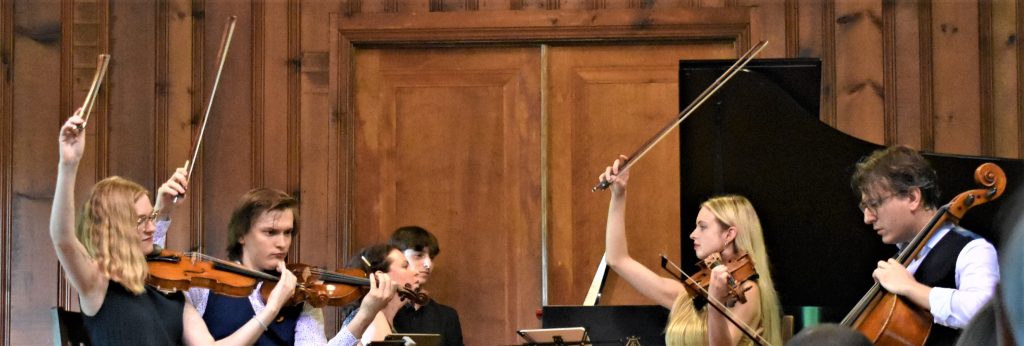
Next Sunday, August 11, at 3 pm Music Mountain features the Daedalus Quartet:
Andrew DAVIS Deep Summer Folklore
Niloufar NOURBAKHSH Logic Run Wild
Béla BARTOK String Quartet #4
Maurice RAVEL String Quartet in F Major